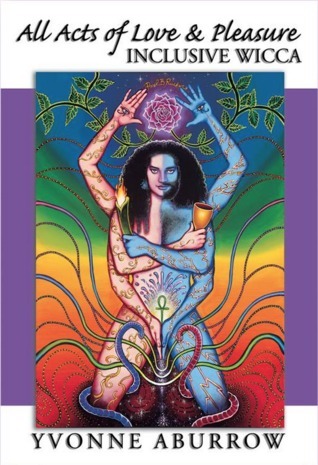Happy Samhain and Happy Halloween to those who celebrate them! Here on the Patheos Pagan channel, we’re just wrapping up a month-long series on ancestor remembrance. Our Pagan writers produced dozens of thoughtful articles on connecting with ancestors. Additionally, some of our writers teamed up with writers from the Progressive Christian, Jewish, Hindu, and Spirituality channels to do ancestor remembrance practices in tandem. I hope in the future we can do more projects like this to form meaningful cross-channel relationships. (The Patheos Public Square focused on remembering the dead this month too — check it out!)
In listening to all these conversations about ancestor work, I wanted to address an objection that often comes up around this topic.
“I don’t like my ancestors. Some of them, in fact, were execreble human beings — rapists and abusers, slaveholders and architects of genocide. I don’t want to honor them, or remember them, or acknowledge their existence at all.”
This is a fair and valid objection. Some of us need to set boundaries between ourselves and our ancestors in the same way that we might need to set boundaries between ourselves and abusive family members. Not all of us will be reconciled with estranged families in our lifetimes, and sometimes keeping distance is the best possible strategy for managing the trauma of the past and the ongoing danger of the present.
Many Pagans who prefer not to honor ancestors of blood focus on ancestors of spirit — mentors or historical figures with whom they have affinity — or beloved dead, friends or adoptive family who have crossed over. Some also honor ancestors of place, those who lived on the land where they now live (and these ancestors may be animal, not human). Our ancestor remembrance project includes several examples of these kinds of ancestors; I’ve particularly enjoyed Nornoriel Lokason’s memorializing of Harvey Milk and Helen Keller and Lupa Greenwolf’s letter to her non-human ancestors.
Other Pagans approach their ancestors of blood by accepting their flaws and focusing on their strengths. This can feel like a more authentic way to honor a dead family member with whom the relationship was conflicted and difficult. Although the article deals with a spiritual ancestor rather than one of blood, Cat Chapin-Bishop’s remembrance of Ann Putnam is a good example of how one might work with a problematic ancestor around themes of redemption.
These kinds of ancestor work still focus on honoring the dead, however; and for anyone who is just beginning ancestor work, honoring is the best and easiest place to start. But ancestor work is not always about remembering the positive. Sometimes, it can be about demanding justice, making reparations, or healing wounds.
My line of witchcraft considers itself “traditional” — a slippery and much-contested word, but here meaning something like “witchcraft that deals primarily in relationships with the land and its inhabitants in various states of embodiment.” As I was taught witchcraft, deepening relationship with the ancestral line is a key element of our work — and if no relationship exists, we must restore it to come fully into our power. So what do we do if the ancestral line is blood-soaked, broken, twisted with hatred, wounded?
The short answer is that we engage the ancestral line where we have direct access to it — beginning with its endpoint, our own embodied selves. Whatever we have inherited from our ancestors that burdens or wounds us, we work to make it right: to atone for our ancestors’ wrongdoing with just action, or to heal grief that our grandmothers and grandfathers carried to their graves. It’s slow work, often painful; and it is not work I would recommend to everyone. There are a thousand ways to deepen spiritually and serve community, and not everyone’s path will lead them to dig into the past this way.
For those who are called to work with their ancestors, especially those who are trying to resolve an inherited spiritual burden, I can recommend an excellent mundane tool. If you have access to family stories, either through family members or through genealogical research, it can be enormously helpful to make a genogram, a tool often used in family systems therapy. A genogram is a kind of family tree that also records major life events (such as illnesses, career changes, etc.) and important aspects of family relationships (strained or very close connections, for example). The results can reveal a pattern that persists over generations, or behaviors in later generations that represent clear reactions to events that occurred before they were born. A genogram can help uncover issues that need to be addressed, and it may even identify specific ancestors who need help in healing, who need to be confronted for crimes, or who may be of aid in either process.
The process of healing one’s ancestral line will be different based on the situation, and it is probably best undertaken for the first time under the guidance of someone experienced in ancestor work. Readers may also find Laura Patsouris’ short book Weaving Memory to be helpful. From personal experience, I can say that to successfully resolve an issue in one’s ancestral line can be an enormous relief that reverberates throughout one’s life. Ancestor work allowed me to shift complexes that years of other spiritual practices and healing modalities had failed to touch.
Ancestor practice that goes beyond honoring can be heavy work. Happily, not every Samhain celebration needs to be about confronting family traumas. My ancestor practice tonight will be to dress up my little one in an adorable monster costume and take him to hand out candy to local trick-or-treaters, as my parents and grandparents did. Whether the Samhain season calls you to deep healing or simple celebration, I wish you all the blessings of the dark time of the year.




















